SpaceX launches advanced GPS satellite for US Space Force, sticks rocket landing at sea
It's SpaceX's 19th rocket launch (and landing) of the year.
CAPE CANAVERAL, Fla. — SpaceX successfully launched an advanced GPS satellite for the U.S. Space Force on Thursday (June 17), marking the 19th launch of the year here on the Space Coast.
One of the company's two-stage Falcon 9 rockets blasted off from Space Launch Complex 40 at Cape Canaveral Air Force Station here at 12:09 p.m. EST (1409 GMT), carrying the GPS III SV05 navigation satellite to orbit. Nine minutes later, the rocket's first stage touched down on the deck of "Just Read the Instructions," one of SpaceX's two drone ships.
"What a beautiful view of the first stage landing," Youmei Zhou, a SpaceX propulsion engineer, said during the company's live launch commentary.
The GPS III SV05 satellite mission is the second to launch so far this month for SpaceX, following the launch of a broadband satellite for Sirius XM on June 6.
Related: The U.S. GPS satellite network explained
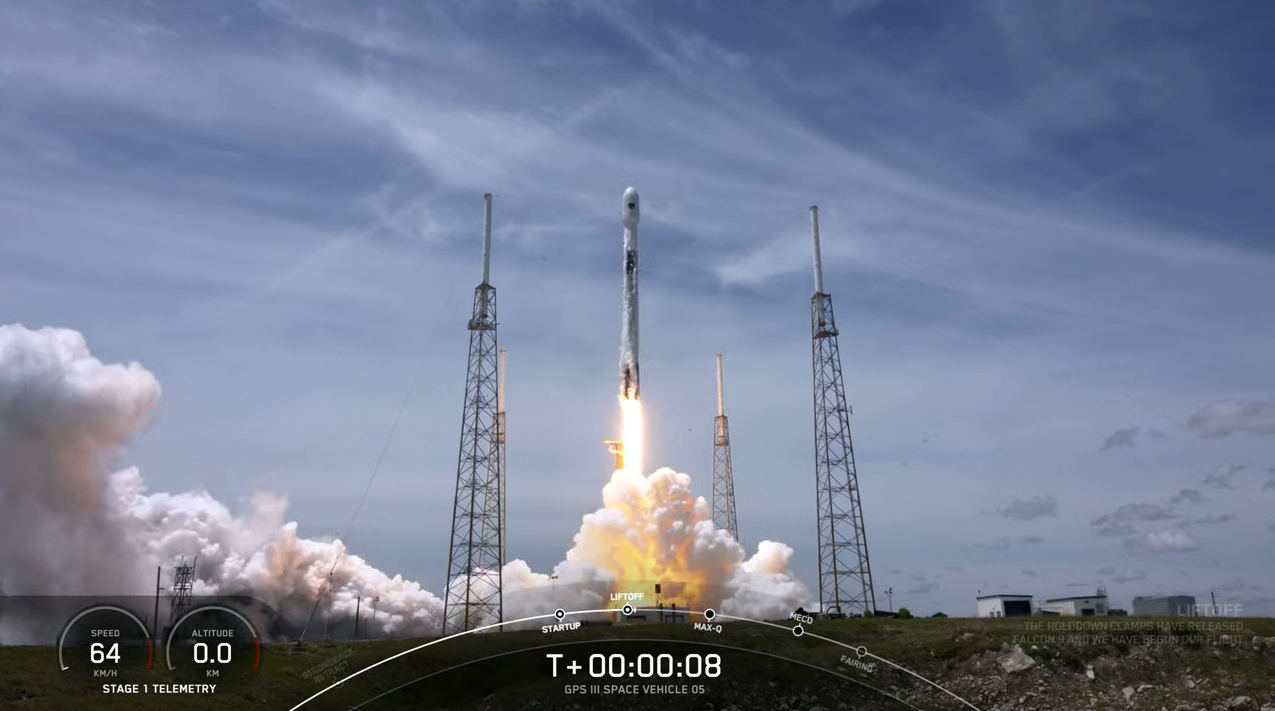

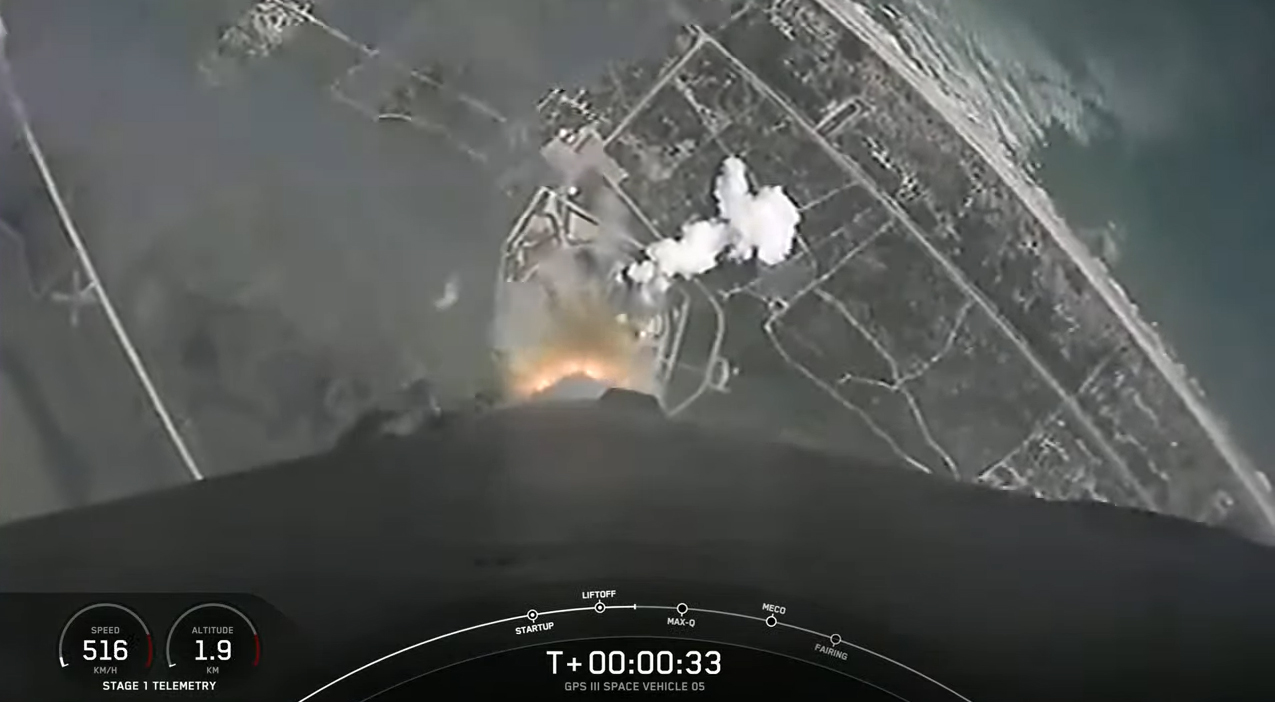
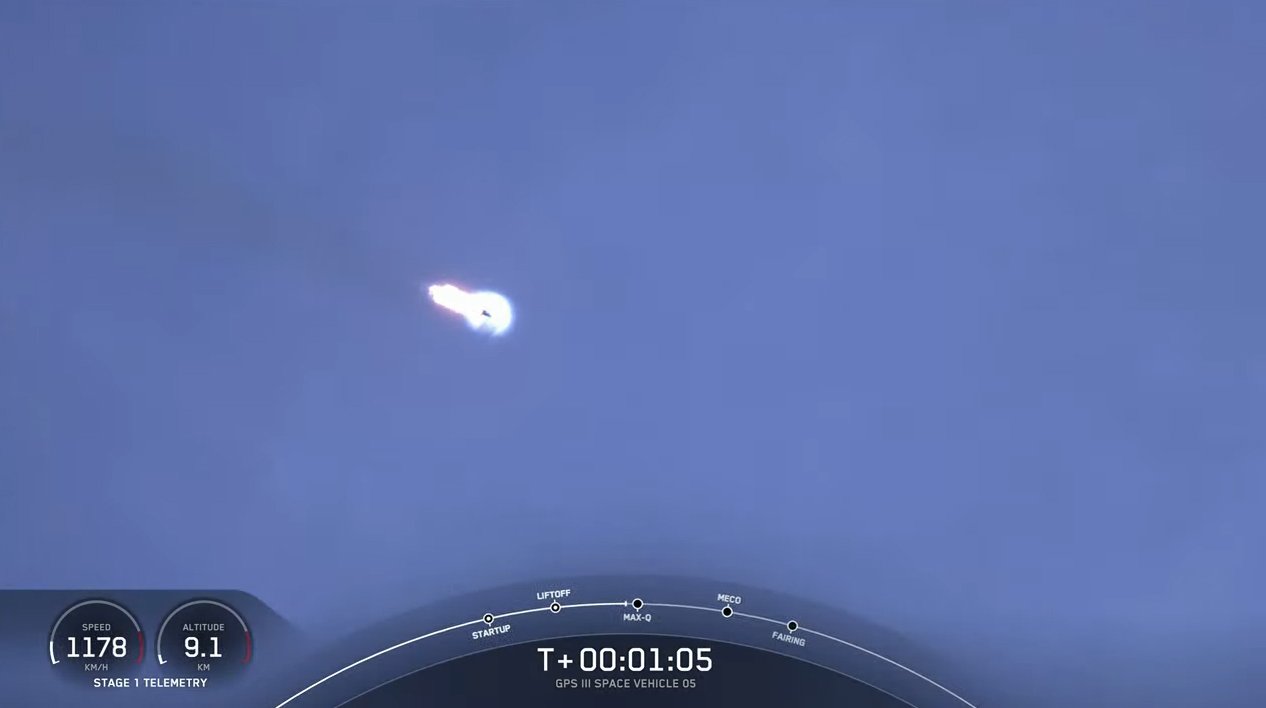
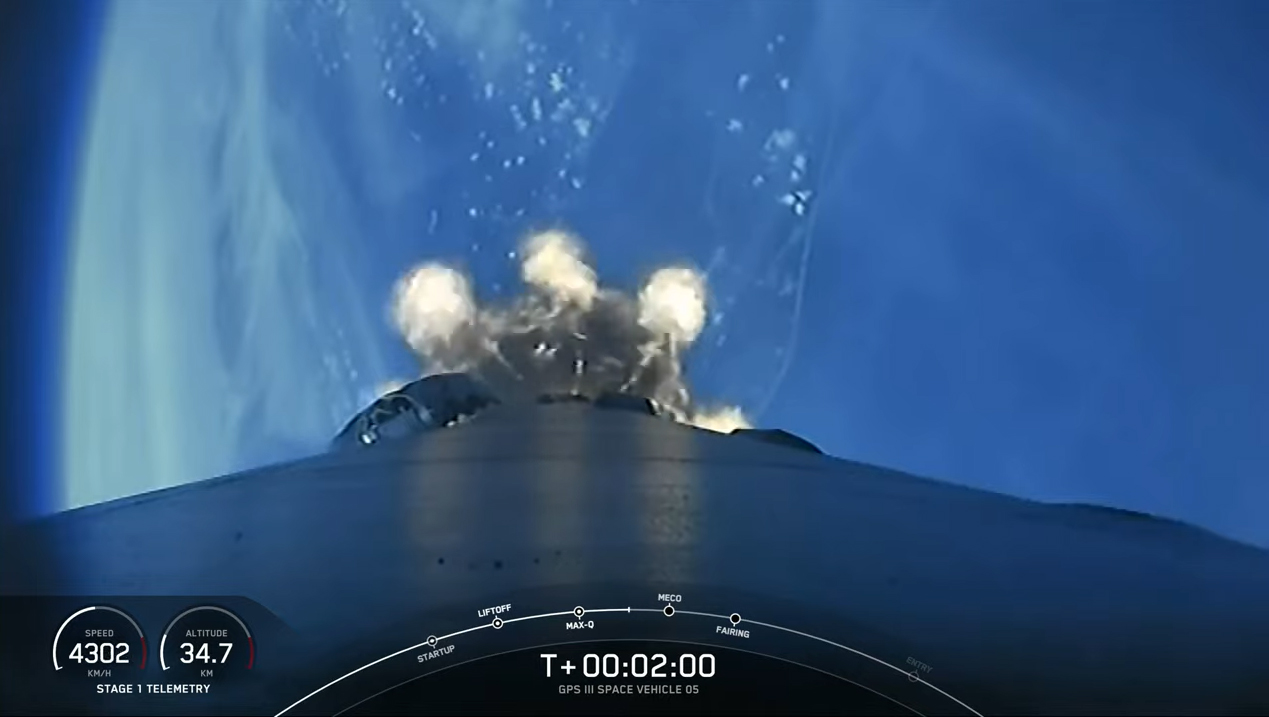
It was nothing but blue skies over the launch pad, and onlookers were treated to a gorgeous view as the rocket climbed to orbit.
Today's flight marks the fourth GPS satellite delivery by SpaceX for the U.S. military. Three previous advanced GPS III missions also launched on Falcon 9 rockets, including two missions last year. Another of the satellites launched in August 2019 on the United Launch Alliance's final flight of the Delta IV Medium rocket.
Get the Space.com Newsletter
Breaking space news, the latest updates on rocket launches, skywatching events and more!
"If you've ever used your phone's mapping service or retrieved a location via a pin drop, you’ve used a satellite in this system," Zhou said.
The U.S. military plans to launch a total of 10 upgraded GPS satellites, as part of an effort to replace aging members of its current constellation. SpaceX has also secured a contract to launch the next GPS III mission as well, which is planned for sometime next year.
Built by Lockheed Martin in Colorado, the GPS III-SV05 satellite, named after Neil Armstrong, is the fifth member of an upgraded generation of GPS navigation spacecraft that is designed to beam down higher-power signals that are more resilient to jamming and boast additional broadcast frequencies to make the GPS network more compatible with other similar constellations, Lockheed representatives have said.
Related: Launch photos! SpaceX Falcon 9 rocket soars with 1st GPS III navigation satellite
Falcon's fury
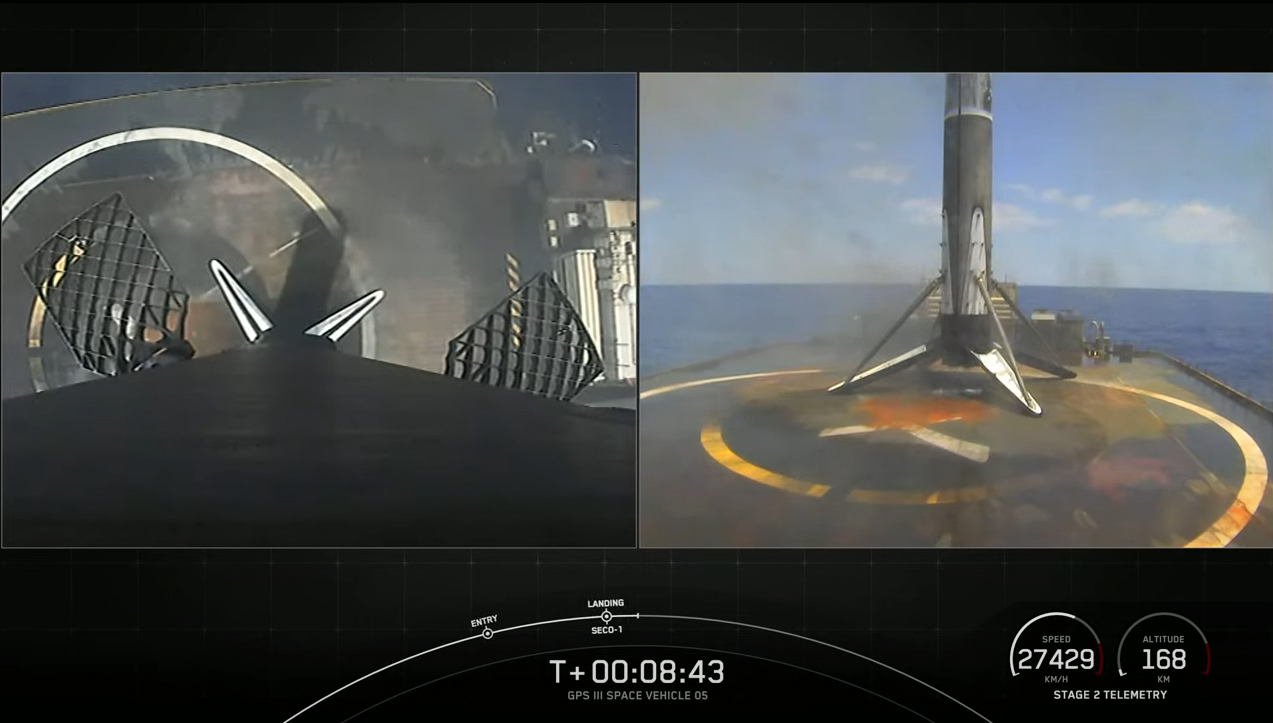
The 227-foot-tall (70 meters) Falcon 9 is SpaceX's workhorse rocket and boasts more than 1.5 million pounds of thrust at liftoff. Today's mission featured a first for the Space Force: flying a payload on a used rocket.
Last year, the agency gave SpaceX the green light to fly its payloads on refurbished rockets. That decision followed on the heels of another recent announcement to allow SpaceX to recover the rocket's first stage during national security missions — something that was previously not allowed.
The next two GPS missions, which are already scheduled to fly on SpaceX rockets sometime next year, will now launch atop refurbished rockets.
All of this is great news for SpaceX, as the company has been relying heavily on its fleet of veteran rockets, with many Falcon 9 first stages having racked up five or more flights each.
Out of 19 missions so far this year, only one has featured a brand new Falcon 9; the rest were on flight-proven boosters.
It's also great news for Space Force and taxpayers as flying on reused rockets translates to a savings of nearly $53 million across the two flights (GPS III-SV05 and GPS III-SV06), Space Force officials said.
Honoring the past
The military has given nicknames to each of the upgraded GPS satellites, naming them after famous explorers. The satellite that launched today was given the moniker "Neil Armstrong" after the NASA astronaut who made history as the first person to step foot on the moon.
Previous satellites have been named "Vespucci" and "Magellan" in honor of explorers Amerigo Vespucci and Ferdinand Magellan. The most recent one that launched in November was named “Sacagewea” after the guide who led Lewis and Clark on their famous expedition in the 1800s.
None of the names are official, just nicknames given to the satellites as part of a space flight tradition of naming spacecraft as well as a way to honor the great explorers of the past.
Space Force officials say other satellites to come will be named after space icons like Amelia Earhart, Sally Ride and Katherine Johnson.
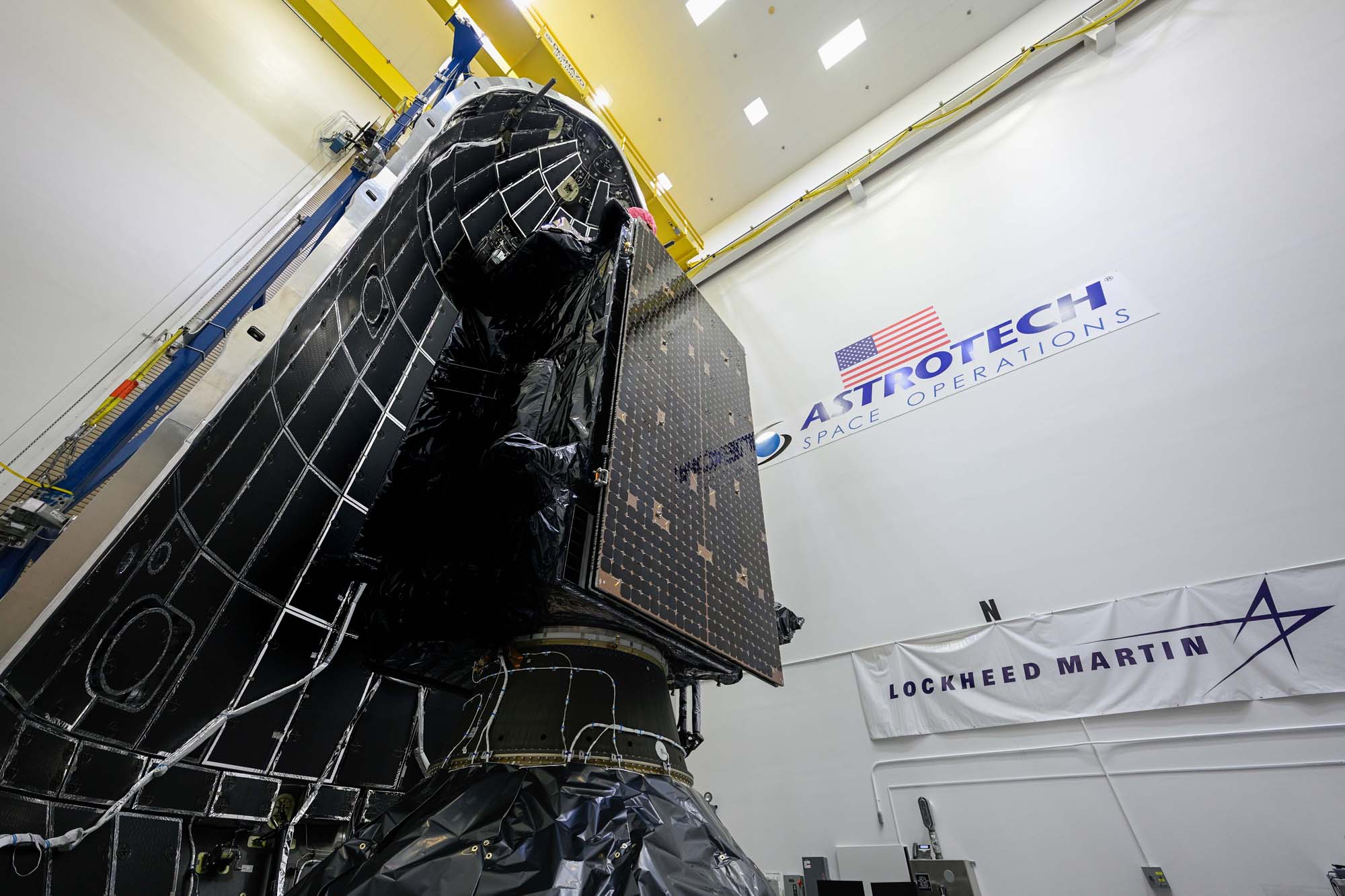
Flight milestones
Today's mission marks the 122nd Falcon 9 rocket to fly and the 19th mission of 2021 for SpaceX. It also marks the 89th successful booster recovery. SpaceX's drone ship "Just Read the Instructions" was positioned out in the Atlantic Ocean, awaiting the recovery attempt.
The company's other drone ship, "Of Course I Still Love You," is on its way to the West Coast. The massive ship departed Port Canaveral last week, embarking on a journey through the Panama Canal. It will eventually dock in the port of Los Angeles and begin West Coast recovery operations for SpaceX.
A third drone ship, "A Shortfall of Gravitas," is almost complete and will be heading to Port Canaveral to help keep up with SpaceX's rapid launch and recovery rate.
The booster B1062 was the star of the show today, and it is the first Falcon 9 booster to carry two different GPS satellites to orbit. It's also the first used Falcon 9 to loft one of these advanced global positioning satellites.
Fairing recovery
The rocket's nose cone (or payload fairing) is the protective shell housing the payload. It deploys once the rocket reaches a certain altitude. Historically the hardware has been tossed aside, never to be used again.
With each Falcon 9 fairing half worth an estimated $3 million, SpaceX has worked to recover them and fly them again in recent years as part of its reusability efforts. The fairings use parachutes to slow their descent so they can be retrieved from the ocean.
SpaceX has been shuffling around recovery boats, and even hiring some temporary help, in order to recover those fairings from the ocean. The fairing recovery vessel for today's launch is making its debut here in Florida. The black and orange boat, named Hos Briarwood, will hoist the fairings out of the water with its on board crane. If they're in good shape, they may fly again soon.
SpaceX has another mission to come this month, as the company continues with its rideshare program. The Transporter-2 mission is scheduled to launch on June 24 and will launch a whole host of satellites, similar to the company's record-setting 143-satellite Transporter-1 mission in 2020.
Follow Amy Thompson on Twitter @astrogingersnap. Follow us on Twitter @Spacedotcom or Facebook.
Join our Space Forums to keep talking space on the latest missions, night sky and more! And if you have a news tip, correction or comment, let us know at: community@space.com.

Amy Thompson is a Florida-based space and science journalist, who joined Space.com as a contributing writer in 2015. She's passionate about all things space and is a huge science and science-fiction geek. Star Wars is her favorite fandom, with that sassy little droid, R2D2 being her favorite. She studied science at the University of Florida, earning a degree in microbiology. Her work has also been published in Newsweek, VICE, Smithsonian, and many more. Now she chases rockets, writing about launches, commercial space, space station science, and everything in between.









